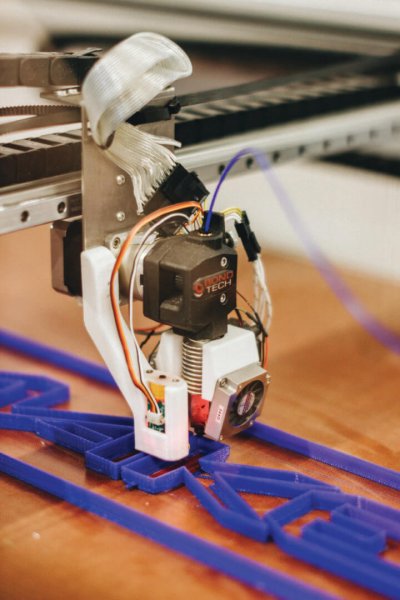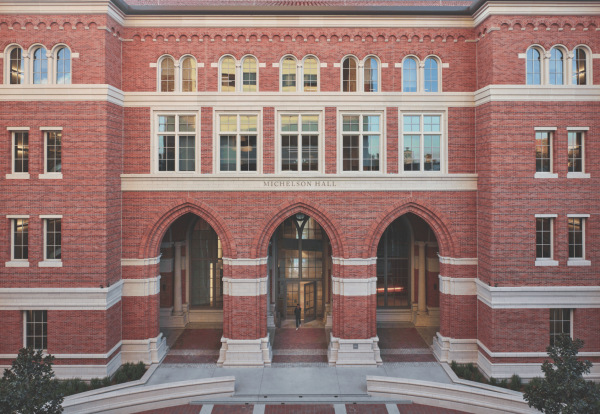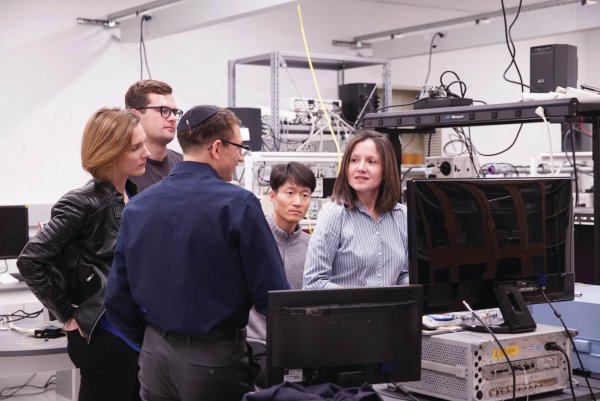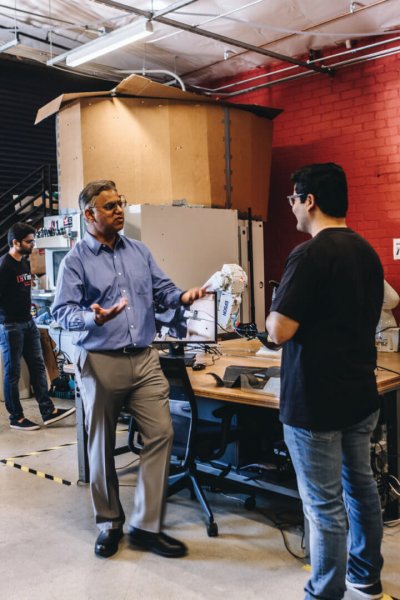The USC Viterbi Initiative Impact
PILLAR 1: Top Talent
Home to top talent: With its fountains, statue of Neil Armstrong and outdoor meeting spaces, the Epstein Family Engineering Plaza, completed in 2014, has become a gathering place for faculty, students and staff.

58 Endowed Scholarships Established
Rhea Choudhury, BME ’19
A Richardson Merit Research Awardee and Trustee Scholar, Choudhury launched her start-up, Intram, to help eliminate pre-hospital delays for stroke patients. Her team was one of only five U.S. teams to qualify for the 2017 National Academy of Engineering’s International Student Day Business Model Competition.
“There is no question that I could not have done any of it without the scholarship that got me here in the first place and the continued support I’ve received from USC Viterbi to truly follow my passions.”
19 Endowed Faculty Positions Established
“Top 35 Global Innovators Under Age 35”
Since 2009, 13 members of the USC Viterbi faculty have appeared on MIT Technology Review’s prestigious list (which includes industry and academia), including six honorees hired since 2011.
Maryam Shanechi, Andrew and Erna Viterbi Early Career Chair
Shanechi’s breakthrough in brain research — decoding moods from neural signals in the brain — may one day lead to new treatments for depression and anxiety disorders.
“If we know the mood at a given time, we can use it to decide whether or how electrical stimulation should be delivered to the brain at that moment to regulate unhealthy, debilitating extremes of emotion.”
PILLAR 2: Increased Value (Curriculum / Programs / Infrastructure)
Since November 2017, the USC Michelson Center for Convergent Bioscience has brought together premier scientists and engineers under one roof. Housed in the 190,000-square-foot Michelson Hall, it’s the biggest and most complex building ever constructed on the University Park Campus.
The building is the result of a generous $50 million gift from orthopedic spinal surgeon, inventor and philanthropist Gary K. Michelson and his wife, Alya Michelson.
Engineers from USC Viterbi, scientists from the USC Dornsife College of Letters, Arts and Sciences and doctors from the Keck School of Medicine of USC collaborate here to solve some of the most critical health issues of our time.
Stacey Finley, the Gordon S. Marshall Early Career Chair and associate professor of biomedical engineering, has partnered with Shannon Mumenthaler, a Keck USC assistant professor of medicine, to find new cancer treatments using computer simulations. Their focus: treatments aimed at starving tumors of blood and nutrients.
Professor Andrea Armani, who holds the Ray Irani Chair in Chemical Engineering and Materials Science, was named a Global Leader by the Davos World Economic Forum in 2015.
Her lab designs low-cost, widely deployable precision medicine for under-resourced communities, such as a portable screening device for malaria.
PILLAR 3: Global Solutions / Grand Challenges
The Center for Advanced Manufacturing (CAM), a regional hub for innovation in how things are made, launched in 2017. It’s the only academic facility of its type in Greater Los Angeles.
CAM features a design studio and a machining lab equipped with 3-D printers, laser cutters, industrial robots and automation equipment. There is also classroom space for undergraduates, graduate-level students, as well as members of the community.
S.K. Gupta, the Smith International Professor of Mechanical Engineering and Computer Science, hopes CAM will aid “a golden age” of high-end manufacturing, such as the production of drones, advanced batteries, driverless cars and biomedical devices.
“Because the robots and 3-D printing machines used in advanced manufacturing cost the same in the United States as in China or Mexico, much of the production of the Fourth Industrial Revolution could take place in America,” he said.

In addition to CAM, USC Viterbi has created nearly 20 research centers since the start of the Viterbi Initiative. Read more about one of them, the USC Center for Artificial Intelligence in Society (CAIS).
600 Number of wildlife parks globally that plan to use AI created by the Center for Artificial Intelligence in Society (CAIS) to protect endangered animals.
PILLAR 4: Catalyze Economic Growth
Second Spectrum, led by founders Rajiv Maheswaran and Yuhan Chang, became the NBA’s provider of game tracking technology in 2017. The company now employs more than 75 people in three international offices and lists clients that include the Los Angeles Clippers.
Maheswaran and Chang, both computer scientists, were co-directors of USC’s Computational Behavioral Group from 2006 to 2015.
Second Spectrum won the $50,000 grand prize in the 2013 Maseeh Entrepreneurship Prize Competition, or MEPC, a USC Viterbi business model competition founded with a $1 million endowment from entrepreneur Fariborz Maseeh.
The Min Family Engineering Social Entrepreneurship Challenge, or MFC, encourages would-be entrepreneurs to build companies that benefit society. The competition was launched in 2015 with a gift from alumnus Bryan Min and his wife, Julie Min.
30 NBA teams receiving Second Spectrum optical tracking data, which powers next-generation analytics.







